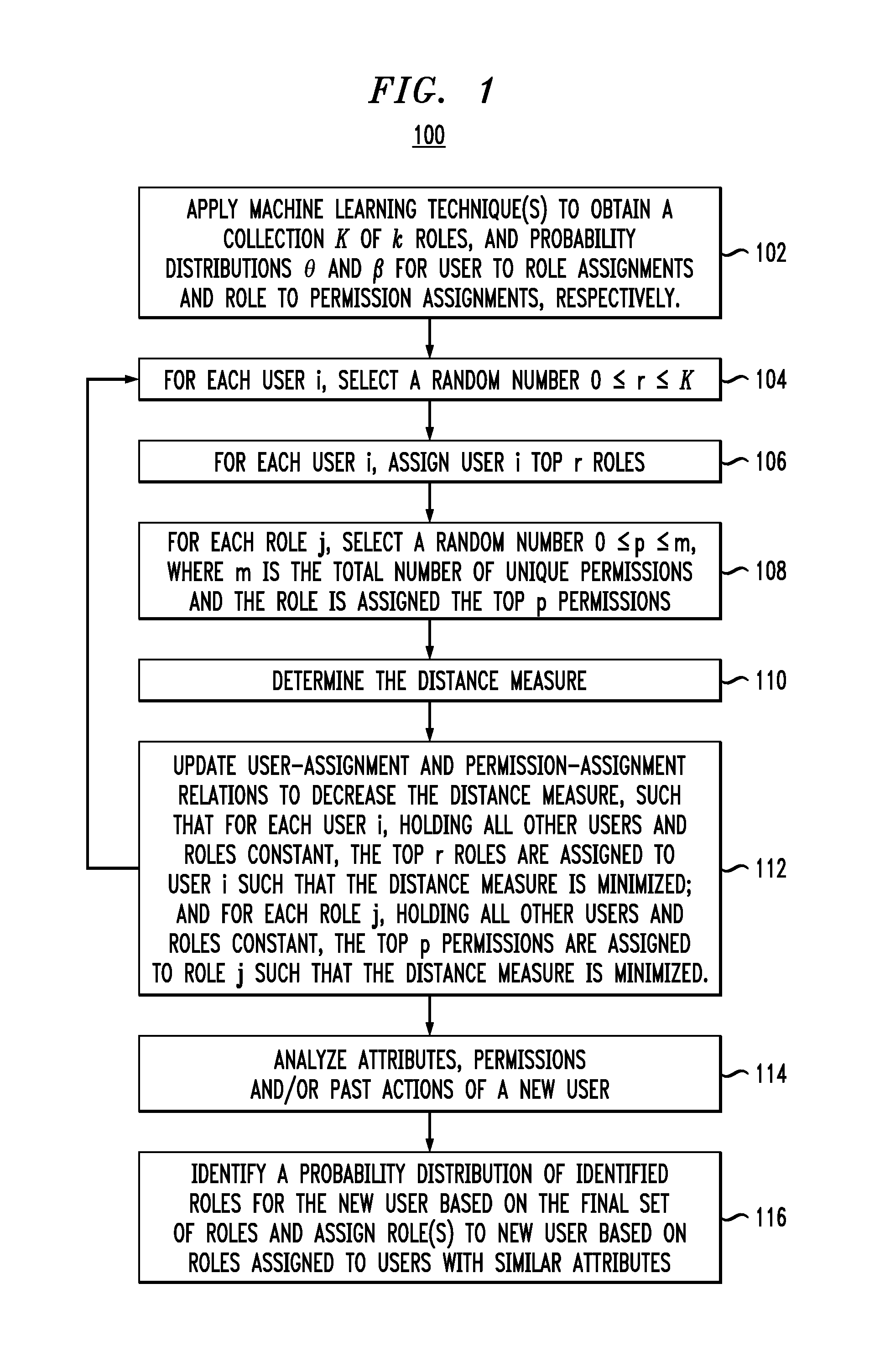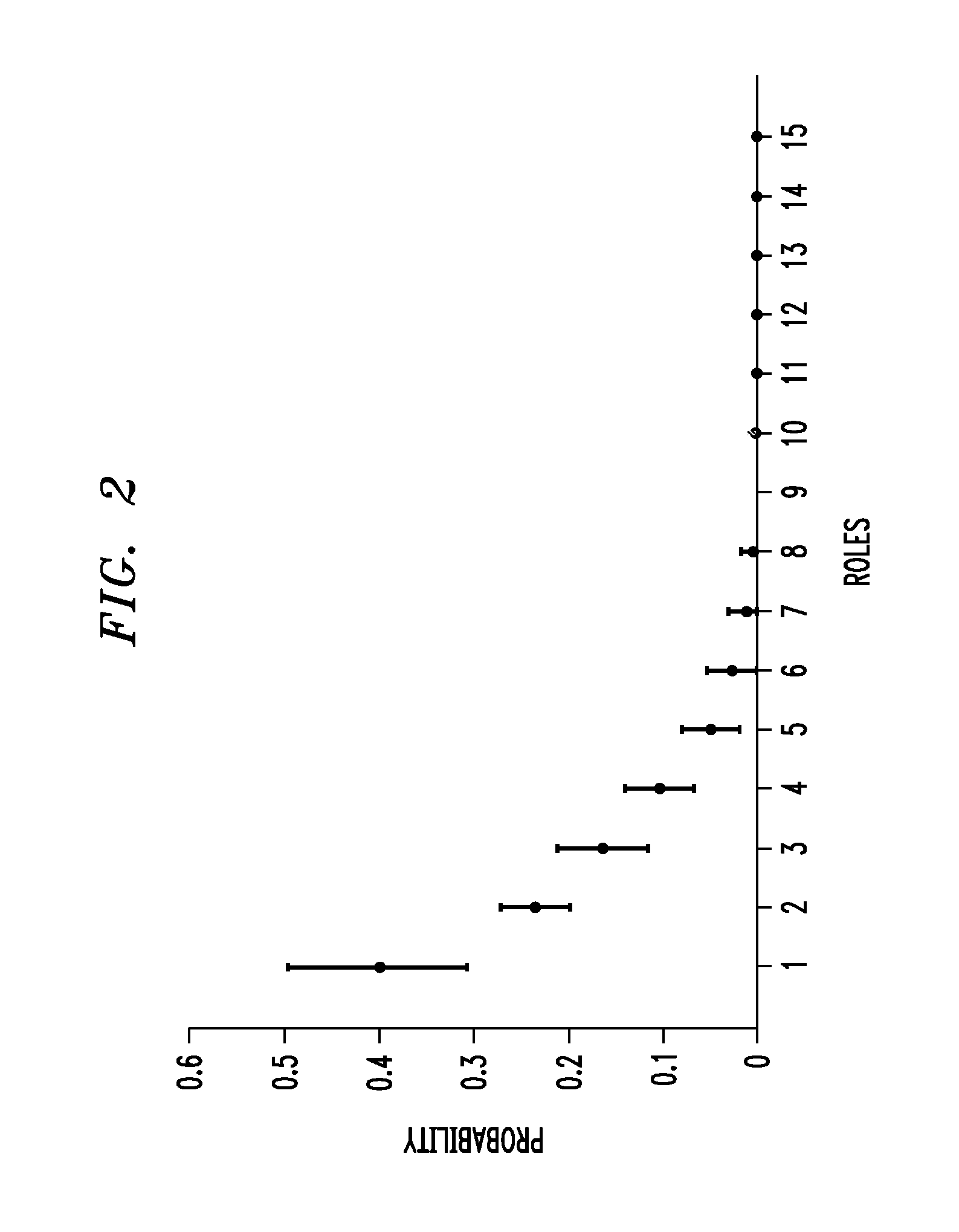Role Mining With User Attribution Using Generative Models
a generative model and user-assignment technology, applied in the field of generative models, can solve problems such as performance problems, significant permission under-assignment, and only work of mac methods, and achieve the effect of improving the state of the art and operating significantly more efficiently
- Summary
- Abstract
- Description
- Claims
- Application Information
AI Technical Summary
Benefits of technology
Problems solved by technology
Method used
Image
Examples
Embodiment Construction
[0036]Given the shortcomings of the above-described conventional role mining processes, a role decomposition technique that can associate role assignments with the actions, such as which entitlement are used, and attributes, such as the department and job roles of users, would be desirable. The role mining problem is now described. Role-based access control (RBAC) is an attractive and widely used model in enterprise security and identity management products. RBAC offers a conceptually simple way to tie entitlements to business function, reduces the number of relations to be managed and makes administration simpler. The process of role engineering, which is the step of constructing the RBAC systems, is the most costly part of adopting a role-based system. See, for example, E. J. Coyne “Role engineering,” RBAC'95 Proceedings of the first ACM Workshop in Role-based access control, pg. I-15-I-16 (1995) (hereinafter “Coyne”), the contents of which are incorporated by reference herein.
[00...
PUM
 Login to View More
Login to View More Abstract
Description
Claims
Application Information
 Login to View More
Login to View More - R&D
- Intellectual Property
- Life Sciences
- Materials
- Tech Scout
- Unparalleled Data Quality
- Higher Quality Content
- 60% Fewer Hallucinations
Browse by: Latest US Patents, China's latest patents, Technical Efficacy Thesaurus, Application Domain, Technology Topic, Popular Technical Reports.
© 2025 PatSnap. All rights reserved.Legal|Privacy policy|Modern Slavery Act Transparency Statement|Sitemap|About US| Contact US: help@patsnap.com



